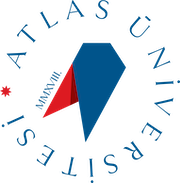| Week |
Subject |
Related Preparation |
| 1) |
|
|
| 1) |
Nucleic Acids: DNA a structure and functions |
Molecular Biology of the Cell, 4th edition Bruce Alberts, Alexander Johnson, Julian Lewis, Martin Raff, Keith Roberts, and Peter Walter Garland Science 2002 |
| 2) |
Nücleic Acids: RNA structure and functions |
Molecular Biology of the Cell, 4th edition Bruce Alberts, Alexander Johnson, Julian Lewis, Martin Raff, Keith Roberts, and Peter Walter Garland Science 2003 |
| 3) |
Dynamic 3-D structure of prokaryotic DNA |
Molecular Biology of the Cell, 4th edition Bruce Alberts, Alexander Johnson, Julian Lewis, Martin Raff, Keith Roberts, and Peter Walter Garland Science 2004 |
| 4) |
Dynamic 3-D structure of chromosomes |
Molecular Biology of the Cell, 4th edition Bruce Alberts, Alexander Johnson, Julian Lewis, Martin Raff, Keith Roberts, and Peter Walter Garland Science 2005 |
| 5) |
Gene Structure |
Molecular Biology of the Cell, 4th edition Bruce Alberts, Alexander Johnson, Julian Lewis, Martin Raff, Keith Roberts, and Peter Walter Garland Science 2006 |
| 6) |
Content of the Genome |
Molecular Biology of the Cell, 4th edition Bruce Alberts, Alexander Johnson, Julian Lewis, Martin Raff, Keith Roberts, and Peter Walter Garland Science 2007 |
| 7) |
Biochemical foundations of DNA replication in prokaryotes and discovering researches. |
Molecular Biology of the Cell, 4th edition Bruce Alberts, Alexander Johnson, Julian Lewis, Martin Raff, Keith Roberts, and Peter Walter Garland Science 2008 |
| 8) |
Midterm |
|
| 9) |
Biochemical foundations of DNA replication in eukaryotes and discovering researches. |
Molecular Biology of the Cell, 4th edition Bruce Alberts, Alexander Johnson, Julian Lewis, Martin Raff, Keith Roberts, and Peter Walter Garland Science 2008 |
| 10) |
DNA Recombination |
Molecular Biology of the Cell, 4th edition Bruce Alberts, Alexander Johnson, Julian Lewis, Martin Raff, Keith Roberts, and Peter Walter Garland Science 2009 |
| 11) |
DNA Repair |
Molecular Biology of the Cell, 4th edition Bruce Alberts, Alexander Johnson, Julian Lewis, Martin Raff, Keith Roberts, and Peter Walter Garland Science 2010 |
| 12) |
Transposable elements and Retroviruses |
Molecular Biology of the Cell, 4th edition Bruce Alberts, Alexander Johnson, Julian Lewis, Martin Raff, Keith Roberts, and Peter Walter Garland Science 2011 |
| 13) |
Protein structure and functions: Structure of amino acids and their groups Primary structure of proteins: polypeptides |
Molecular Biology of the Cell, 4th edition Bruce Alberts, Alexander Johnson, Julian Lewis, Martin Raff, Keith Roberts, and Peter Walter Garland Science 2012 |
| 14) |
Secondary ( α heliks, β sheet )Tertiary and Quaternary structure of proteins |
Molecular Biology of the Cell, 4th edition Bruce Alberts, Alexander Johnson, Julian Lewis, Martin Raff, Keith Roberts, and Peter Walter Garland Science 2013 |
| 15) |
Recent Literature Discussion |
Molecular Biology of the Cell, 4th edition Bruce Alberts, Alexander Johnson, Julian Lewis, Martin Raff, Keith Roberts, and Peter Walter Garland Science 2014 |
| 16) |
|
|
| |
Program Outcomes |
Level of Contribution |
| 1) |
Possessing sufficient knowledge required in the field of Molecular Biology and Genetics. |
|
| 2) |
Being able to use the theoretical knowledge required in the field of Molecular Biology and Genetics. |
|
| 3) |
Being able to apply practical skills required in the field of Molecular Biology and Genetics. |
|
| 4) |
Being able to identify, define, and interpret problems in the field of Molecular Biology and Genetics. |
|
| 5) |
Being able to select appropriate analysis and modeling methods to solve problems in the field of Molecular Biology and Genetics. |
|
| 6) |
Being able to apply appropriate analysis and modeling methods to solve problems in the field of Molecular Biology and Genetics. |
|
| 7) |
Being able to understand and interpret any process, event, phenomenon, equipment, or product. |
|
| 8) |
Being able to solve encountered problems using appropriate and modern methods. |
|
| 9) |
Being able to show interest in different disciplines outside the field for personal and professional development. |
|
| 10) |
Being able to select and use modern tools required for Molecular Biology and Genetics applications. |
|
| 11) |
Being able to effectively use information technologies for Molecular Biology and Genetics applications. |
|
| 12) |
Being able to design, conduct experiments, collect data, analyze results, report, archive, decode and/or interpret in the field of Molecular Biology and Genetics. |
|
| 13) |
Being able to take responsibility, solve unexpected complex situations, and communicate well both individually and as a team member in applications of Molecular Biology and Genetics. |
|
| 14) |
Being able to effectively communicate in Turkish, both orally and in writing, to plan and carry out academic studies independently or with stakeholders in the field of Molecular Biology and Genetics. |
|
| 15) |
Being able to effectively communicate in at least one foreign language, both orally and in writing, to plan and carry out academic studies independently or with stakeholders in the field of Molecular Biology and Genetics. |
|
| 16) |
Possessing the awareness of the necessity of lifelong learning, the ability to access information, follow developments in science and technology, and constantly renew oneself. |
|
| 17) |
Possessing the awareness of societal, scientific, and ethical values in the collection, interpretation, dissemination, and application of data related to the field of Molecular Biology and Genetics and the consciousness to protect these values. |
|
| 18) |
Being able to understand the universal and societal impacts (environmental issues, economy, sustainability, etc.) and legal aspects of Molecular Biology and Genetics applications. |
|
 BİLGİ PAKETİ / DERS KATALOĞU
BİLGİ PAKETİ / DERS KATALOĞU
